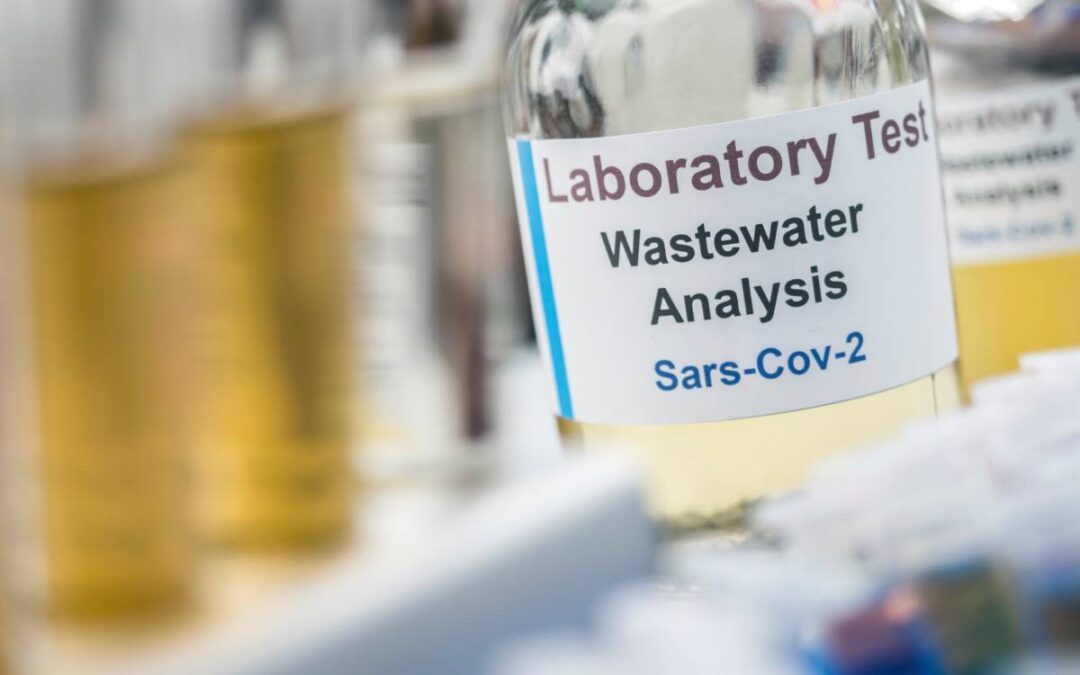Due to the ongoing COVID-19 pandemic, surveillance of infection rates nationwide has become a core focus of public health and research efforts. The rapid development of COVID-19 tests and the implementation of reporting systems at the state and federal levels have provided a crucial source of data in this regard. However, there are several limitations to comprehensive, accurate surveillance with tests alone – organizations and businesses have relaxed or removed testing requirements over time, at-home tests have partially replaced the more easily monitored laboratory tests, and asymptomatic individuals have less reason to get tested and thus data can underestimate infection rates. Having multiple types of data helps to complete the picture. One other strategy that can complement clinical case counts is monitoring disease through analysis of wastewater [1-3].
Even before the COVID-19 pandemic, research demonstrated proof of concept and/or successful practical implementation of disease monitoring through wastewater in a variety of contexts. Wastewater has been analyzed for viruses, parasites, and bacteria that are relevant to human health [3-5]. One review article found that most studies on virus surveillance in wastewater have focused on the prevalence of human enteric viruses in wastewater and wastewater-polluted environments, which is directly relevant for public health because such viruses are transmitted through the fecal-oral route, e.g. contaminated water [3]. Another group of researchers used genotype and subtype analysis from wastewater to characterize the transmission of three parasites: cryptosporidiosis, giardiasis, and microsporidiosis [4]. Interestingly, one study across multiple European countries was able to measure the presence of antibiotic resistant bacteria in wastewater treatment plants and compare that to clinical prevalence. Data showed that wastewater data followed the same pattern as clinical data [5]. These and other studies provide a strong foundation for disease monitoring through wastewater that was swiftly applied to COVID-19 [3].
Key tools for this approach had already been developed. For example, technology for concentrating wastewater samples, DNA and RNA amplification, and sequencing to assess pathogen strains existed already [3]. In addition, knowledge of how to develop an effective and efficient sampling strategy given the infrastructure of specific regions is important [1].
The first report of SARS-CoV-2 genetic material being detected in wastewater was in the beginning of the pandemic [2]. Research found that people infected with SARS-CoV-2 can shed viral RNA in their feces, and this RNA can be detected in community wastewater. Importantly, this is true of asymptomatic infections as well. CDC launched the National Wastewater Surveillance System (NWSS) in September 2020, working with health departments and other federal agencies, with the goal of measuring trends at the community level and acting as an early warning system for outbreaks [1].
The spread of the Omicron variant highlighted the potential of the wastewater monitoring system. Though the first clinical case in the US was reported on December 1, 2021, Omicron-associated mutations were detected as early as one week prior, suggesting that the highly infectious variant was present earlier than initially believed [6].
References
[1] Centers for Disease Control and Prevention; National Center for Emerging and Zoonotic Infectious Diseases; and Division of Foodborne, Waterborne, and Environmental Diseases. (2020). National Wastewater Surveillance System (NWSS). CDC. https://www.cdc.gov/healthywater/surveillance/wastewater-surveillance/wastewater-surveillance.html
[2] McClary-Gutierrez, J. S., Mattioli, M. C., Marcenac, P., et al. SARS-CoV-2 Wastewater Surveillance for Public Health Action. Emerging Infectious Diseases. 2021;27(9):1-8. DOI: 10.3201/eid2709.210753
[3] Farkas, K., Hillary, L. S., Malham, S. K., et al. Wastewater and public health: the potential of wastewater surveillance for monitoring COVID-19. Current Opinion in Environmental Science and health. 2020;17:14-20. DOI: 10.1016/j.coesh.2020.06.001
[4] Li, N., Xiao, L., Wang, L., et al. Molecular Surveillance of Cryptosporidium spp., Giardia duodenalis, and Enterocytozoon bieneusi by Genotyping and Subtyping Parasites in Wastewater. PLOS Neglected Tropical Diseases. 2012;6(9):e1809. DOI: 10.1371/journal.pntd.0001809
[5] Pärnänen, K. M. M., Narciso-Da-Rocha, C., Kneis, D., et al. Antibiotic resistance in European wastewater treatment plants mirrors the pattern of clinical antibiotic resistance prevalence. Science Advances. 2019;5(3). DOI: 10.1126/sciadv.aau9124
[6] Kirby, A. E., Welsh, R. M., Marsh, Z. A., et al. Notes from the Field: Early Evidence of the SARS-CoV-2 B.1.1.529 (Omicron) Variant in Community Wastewater — United States, November–December 2021. Morbidity and Mortality Weekly Report (MMWR). 2022;71(3);103–105. DOI: 10.15585/mmwr.mm7103a5.





Recent Comments